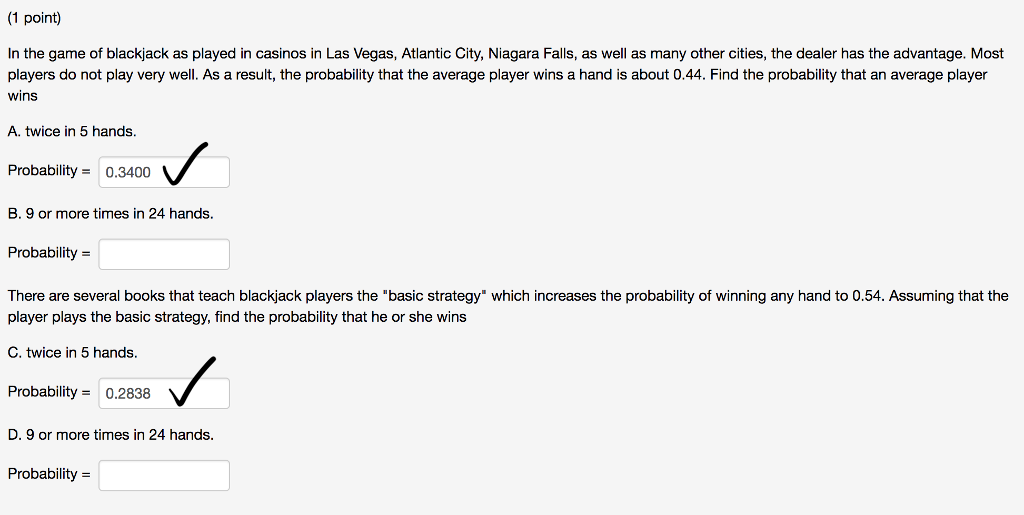Blackjack Math Game

Play Blackjack (or 21) with decimal tenths instead of whole numbers in this fun free online math game for 4th or 5th grade and up. Decimal Blackjack Math Game: a free fun online learning game for 4th or 5th grade - decimal addition and probability for desktop, laptop, notebook, tablet and mobile phone browser. Fortunately all areas of blackjack math are pretty much done for you in a program called CVCX by QFIT. All you have to do is plug in your bet size, bankroll and game conditions and it will spit out your EV, VAR, SD, N0, CE and even the optimal bet spread.
Card counting

Card counting is the practice of keeping track of the cards dealt in previous blackjack hands in order to calculate the possibility of specific cards being dealt in the current hand. Players good at this method can gain an advantage over the house. Card counting is much easier in one-deck games of blackjack, but can become quite difficult in multi-deck games, and in games with frequent reshuffles. While card counting mentally is completely legal, using external devices to enable this tracking is illegal. Players visibly seen as counting the cards at the blackjack tables are unwelcome guests in casinos and are frequently asked to leave the premises.
Card counters typically assign a point score to each rank of card that is dealt at the table, keeping a running score in their heads. As each card is exposed, the player adds the score of that card to the running total, which is considered the 'count'. After each reshuffle of the deck, the count starts again at 0.
The films “Rain Man” and “21” and some other blackjack movies included scenes of players counting cards, giving them an advantage over the casinos where they played blackjack.
Hi-Lo strategy
Hi-Lo strategy is a card counting system, and it is actually the easiest one to learn. Using the Hi-Lo card counting calculation system, all cards are assigned values of +1, 0 and -1 depending on their value in the game itself. Cards numbered 2–6 are called low cards and assigned a value of +1. Aces, tens, jacks, queens, and kings, the high cards, are assigned a value of -1. The remaining cards (7, 8, 9) are assigned a value of 0.
As each card is dealt at the blackjack table it is easy to add up the point values in your head. The greater that number is, the more high cards remaining in the deck to be dealt. This is a simple method of card counting that will make it easier to decide whether to hit, stand, split or double down on the cards you are dealt.
Shuffle tracking
Shuffle tracking is an advanced form of card counting. Instead of tracking the count of individual cards, the player keeps track of one or more subsections of cards as they are played. These sections are referred to as tracking zones. After the cards are played, and then shuffled, there are zones of cards in the upcoming deals which contain most of the cards in the original tracking zones. This method requires keen eye observation and memory skills
Probability in blackjack
Card counters and all avid blackjack players who rely on skill in order to achieve an advantage at the table employ some element of probability in their calculations as to what card will next be dealt. Players know the number of two-card combinations, the possibility of getting a blackjack, and the total number of possible outcomes in each hand. All of these skills are applied blackjack math.
When you employ a card counting technique, you can calculate the probability of specific cards being dealt to you, and, what the dealer’s face down card may be. Keeping track of the score will allow you to calculate the blackjack odds of being dealt a 3, or alternatively a face card. The more you keep track, the more you will be able to apply blackjack mathematics and know how to play.